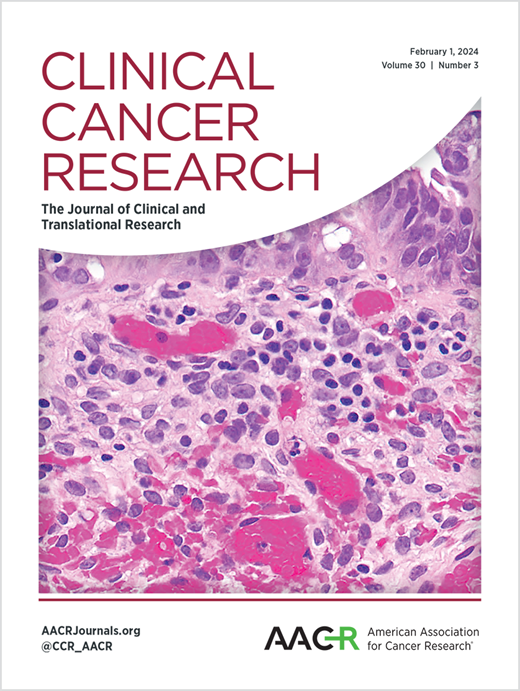Zanubrutinib plus Ixazomib and Dexamethasone in newly diagnosed symptomatic Waldenström macroglobulinemia:a phase II study
IF 10
1区 医学
Q1 ONCOLOGY
引用次数: 0
Abstract
Purpose: Waldenström macroglobulinemia (WM) is a rare type of lymphoma, with no optimal treatment. BTK inhibitor have shown promising outcomes, yet achieving deep remission (VGPR or CR) remains challenging and time-limited therapy with proteasome-inhibition has not been reported. We conducted a phase 2 clinical trial (NCT04463953) to evaluate the efficacy and safety of combining zanubrutinib, ixazomib and dexamethasone (ZID) in newly diagnosed WM patients. Patients and Methods: 27 patients were enrolled in the study. Patients received ZID induction therapy for up to six 28-days’ cycles, followed by consolidation therapy up to total 24 cycles. The primary endpoint was the deep remission rate. Results: Overall, 24 of 27 enrolled patients completed induction treatment. One patient (4.2%) achieved CR. 10 patients (41.6%) achieved VGPR. The overall, major and deep remission rates were 100%, 95.8% and 45.8%, respectively. The median time to response was 2 months (range, 1-5). Five of 22 patients had CXCR4 mutation, with no disparity in the deep remission between the patients with/without CXCR4 mutation (40% vs 50%, P=0.594). The median abnormal lymphocyte (7.6% vs 1.6%, P =0.0019) and plasma cells (0.28% to 0.02%, P =0.0306) in bone marrow were significantly reduced after treatment. With a median follow-up of 30.9 months (range, 15-42). The estimated median PFS and OS were 40 months (95% CI:35.5-44.5) and not reached, respectively, with no difference in patients with/without CXCR4mutations. The most common AE was hematological toxicity. Conclusion: ZID regimen might offer deep remission and provided a time-limited BTKi therarpy in WM patients<SPAN style="font-weight: 400;">. </SPAN>求助全文
约1分钟内获得全文
求助全文
来源期刊

Clinical Cancer Research
医学-肿瘤学
CiteScore
20.10
自引率
1.70%
发文量
1207
审稿时长
2.1 months
期刊介绍:
Clinical Cancer Research is a journal focusing on groundbreaking research in cancer, specifically in the areas where the laboratory and the clinic intersect. Our primary interest lies in clinical trials that investigate novel treatments, accompanied by research on pharmacology, molecular alterations, and biomarkers that can predict response or resistance to these treatments. Furthermore, we prioritize laboratory and animal studies that explore new drugs and targeted agents with the potential to advance to clinical trials. We also encourage research on targetable mechanisms of cancer development, progression, and metastasis.
 求助内容:
求助内容: 应助结果提醒方式:
应助结果提醒方式:


